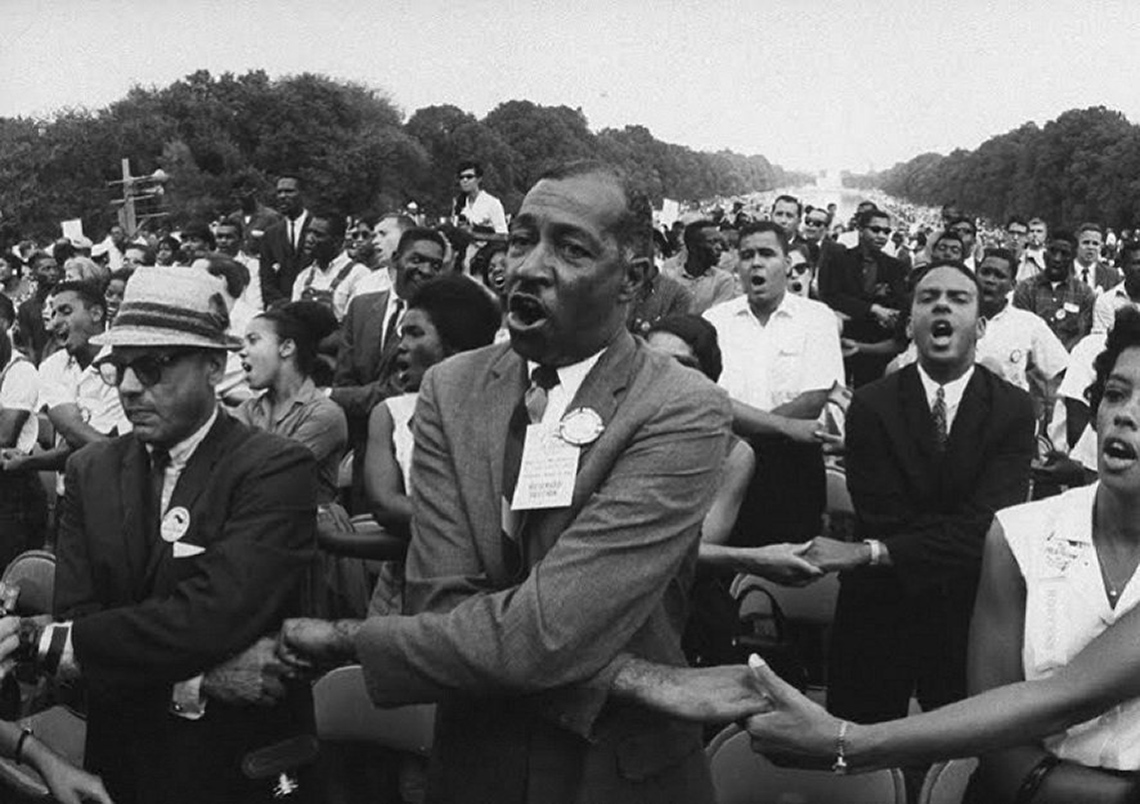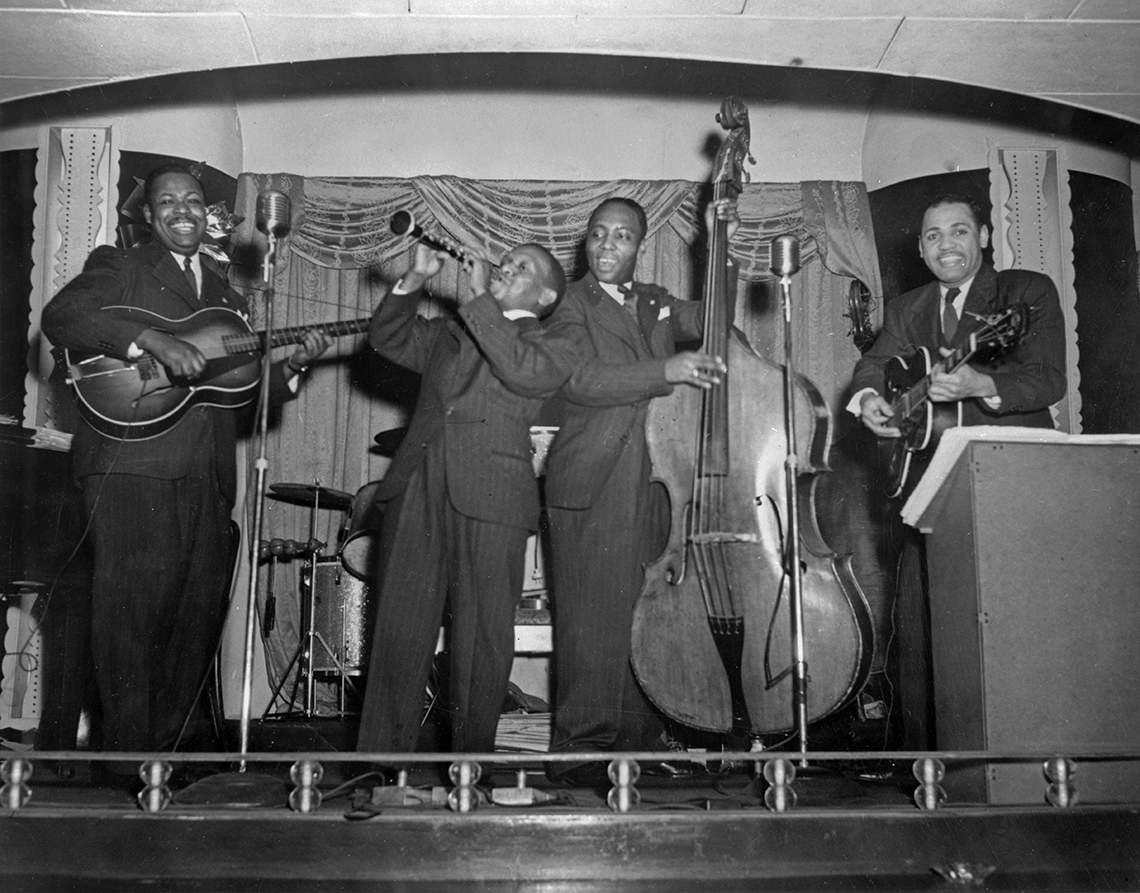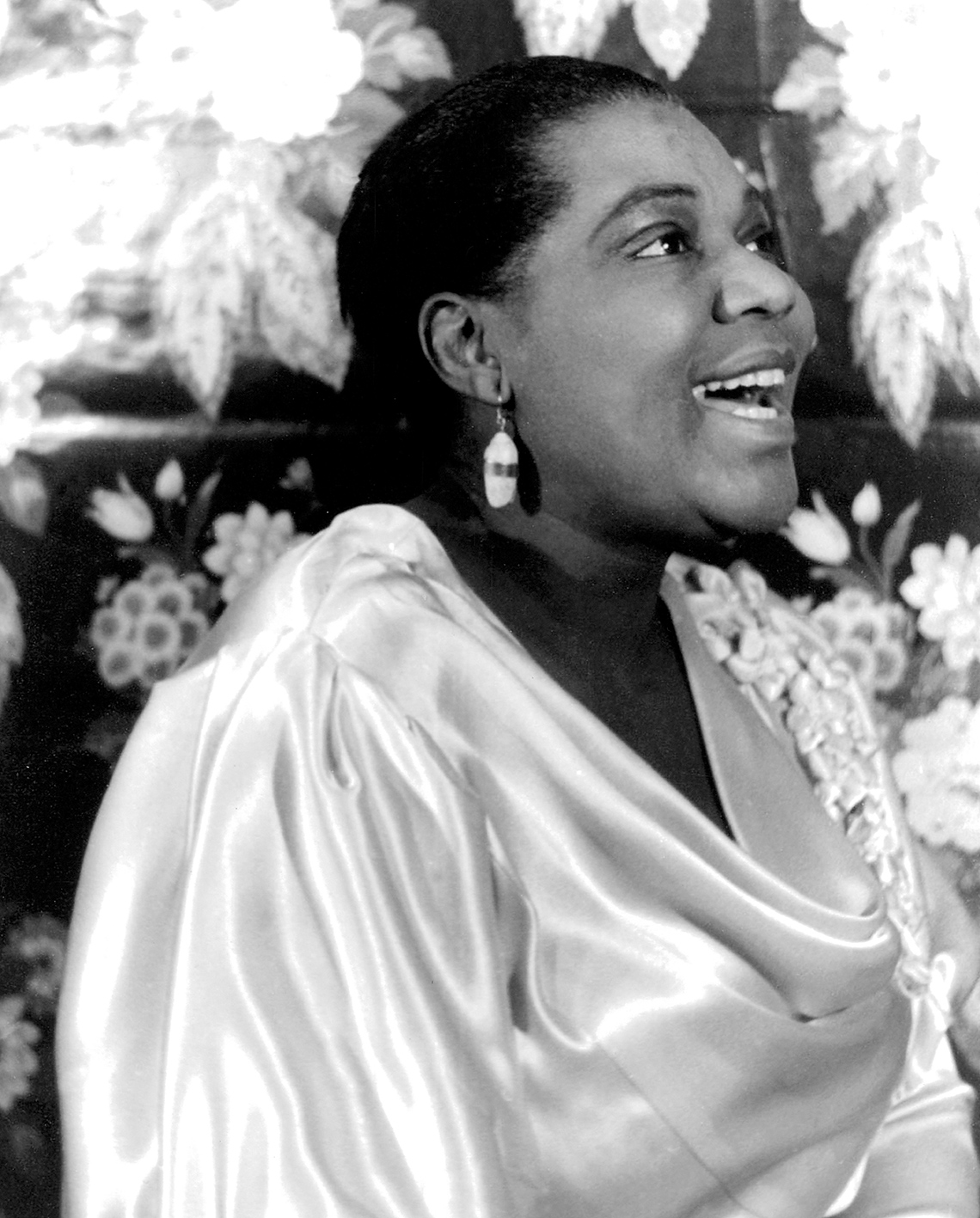Minds On
Today’s vocabulary
The Blues emerged in the late 19th century from the African American communities in the Deep South. The Blues stemmed from a combination of African American oral traditions including rural work songs, field hollers, and spirituals. The hardships that African Americans faced are reflected in the lyrics of Blues songs.
Let’s get started!
Where and how could people experience music in their lives?
Record your ideas using the following fillable Mind Map, or another method of your choice.
Music is more than a source of entertainment. It is a form of expression.
Music connects us and calls us to action.

Music is a vehicle for personal and cultural identity.

In this photo, there is a crowd of people at a concert. In the foreground, someone has put their hands and fingers together to form a heart shape. They are wearing colourful bracelets on their wrists.
This is why it’s interesting to learn about why the music we experience was composed to sound the way it does. Take, for example, the Blues.
Action
Get ready, get set…
The Blues

Did You Know?
Did You Know?

The Blues are an important part of African American history and cultural identity. Did you know that the Blues have influenced many other genres of music including country, jazz, pop, rock and roll, and hip-hop?
The Blues emerged in the late 19th century from the African American communities in the Deep South (the states in the most southern and eastern part of the United States), who were marginalized and economically disadvantaged. It is generally accepted that the Blues stemmed from a combination of African American oral traditions including rural work songs, field hollers, and spirituals. At that time, life was very difficult for many African Americans. Racial discrimination was legal, and African American communities endured tough living conditions.
These hardships are reflected in the lyrics of Blues songs. The Blues are known for expressing feelings such as loss, struggle, pride, and resistance. The lyrics often express feelings of disappointment or other troubles (hence “the Blues”), with a bit of humour to help lighten the mood. The Blues are not always about having “the Blues”, but rather overcoming them.
This is why the lyrics typically communicate a desire to move past a setback or unlucky or unfortunate situation. Music can be a powerful way to resist oppression and empower communities.
Note to learners: The lyrics of Blues music provide the audience with some insight into the social and political complexities which were faced by the African American community during this time. They do not tell the whole story.
The Great Migration
The Great Migration refers to a time in history after the American Civil War from 1910-1970 when more than six million African Americans moved from the southern United States and travelled north and west in search of racial justice and economic and political freedom.
The first wave of the Great Migration describes the years between 1910-1940 when the newcomers brought their stories and songs, cultural and spiritual traditions, brilliance and the Blues with them. This flourishing of intellectual and artistic expression is also known as the Harlem or Black Renaissance.
How did the Great Migration influence popular music?
What do you think the artists were trying to communicate through their music?
Press the ‘Answer’ button for possible responses.
During the Great Migration, artists were able to create and share their music with the larger public. Gospel music, jazz music and the Blues are a few genres of music that were explored during the Great Migration.
Artists were remaking their identities through the Great Migration, but still remembering their roots, their struggles and sharing their stories through their music.
Examining Blues lyrics
Let’s examine the lyrics and an audio clip of a Blues song called “Backwater Blues” by Bessie Smith. Bessie Smith was a Blues singer whose nickname was “The Empress of the Blues”. She is considered to be one of the greatest Blues vocalists.
This song recounts the flooding of Nashville, Tennessee in 1927. Many families were forced to leave their homes, and many lives were lost in the tragedy.

Consider the following map to identify the location of Nashville, Tennessee.

We will use three guiding questions from “Unveiling Stories” to think about the multiple layers of meaning that are found in songs: What is the story? What is the human story? What is the untold story?
“Unveiling Stories” is a thinking routine that was developed by Project Zero, a research center at the Harvard Graduate School of Education.
Explore this audio clip entitled Backwater Blues.
Bessie Smith: Backwater Blues
This audio clip plays the first verse only.
Backwater Blues
When it rained five days and the sky turned dark as night When it rained five days and the sky turned dark as night Then trouble’s takin’ place in the lowlands at night
I woke up this mornin’, can’t even get out of my door I woke up this mornin’, can’t even get out of my door There’s enough trouble to make a poor girl wonder where she wanna go
Then they rowed a little boat about five miles cross the pond Then they rowed a little boat about five miles cross the pond I packed all my clothes, throwed ‘em in and they rowed me along
When it thunders and lightnin’, and the wind begins to blow When it thunders and lightnin’, and the wind begins to blow There’s thousands of people, ain’t got no place to go
And I went and stood up on some high old lonesome hill And I went and stood up on some high old lonesome hill Then looked down on the house where I used to live
Backwater Blues done called me to pack my things and go Backwater Blues done called me to pack my things and go ‘Cause my house fell down and I can’t live there no more
Mmm, I can’t move no more Mmm, I can’t move no more There ain’t no place for a poor old girl to go
Analyze the song using the guiding questions. Record your thinking digitally, orally, or in print.
Press the ‘Answer’ button to reveal possible responses.
What is the story?
This song recounts the flooding of Nashville, Tennessee in 1927. Many families were forced to leave their homes, and many lives were lost in the tragedy.
What is the human story?
The woman in the song must abandon her home and is rowed in a little boat to safety. She climbs to the top of a hill and looks at the damage caused by the flood. She describes her grief and loss as the “Backwater Blues”.
What is the untold story?
The audience might wonder why the “thousands of people” have nowhere to go. What factors could be causing this? This brings us back to the idea of the Blues showing hardship and struggle of people.
Go!
What is the story?
We just explored the lyrics of a Blues song and thought about the story it tells, by using the “Unveiling Stories” thinking routine from Project Zero. Press each question below for a description.
Let’s explore another Blues song by W.C. Handy called “St. Louis Blues.” In the audio clip, this song is performed by Bessie Smith.
We will use the same guiding questions to think about the lyrics, and the stories they tell.
Bessie Smith–St. Louis Blues, 1925
This audio clip plays the fourth verse only.
St. Louis Blues
I hate to see that evening sun go down I hate to see that evening sun go down ‘Cause my baby, he’s gone left this town
Feelin’ tomorrow like I feel today If I’m feelin’ tomorrow like I feel today I’ll pack my truck and make my give-a-way
St. Louis woman with her diamond ring Pulls that man around by her, if it wasn’t for her and her That man I love would have gone nowhere, nowhere
I got the St. Louis Blues, Blues as I can be That man’s got a heart like a rock cast in the sea Or else he wouldn’t have gone so far from me
I love my baby like a school boy loves his pie Like a Kentucky colonel loves his mint ‘n rye I love my man till the day I die
Analyze the song using the same guiding questions. Use the following fillable graphic organizer, or another method of your choice, to record your thinking.
Press the Answer buttons to reveal possible responses.
What is the story?
The lyrics tell a story about the pain felt after a break-up. The man in the song has left his primary partner for another woman.
What is the human story?
The woman describing the breakup explains how it has affected her. She has the “Blues” and “hates to see that evening sun go down” because it reminds her of what she has lost.
What is the untold story?
The audience might wonder about the man who is described as having a “heart like a rock cast in the sea” and the relationship he has with the woman with her “diamond ring”. How will the woman in this song overcome her grief and love again? This song illustrates how the Blues can express loss in powerful ways.
Call to action

In his autobiography, William Christopher (W.C.) Handy refers to himself as the “Father of the Blues.” In 1914, W. C. Handy wrote “St. Louis Blues”, which has become one of the most popular and well-known songs in Blues history. It has been recorded by many artists including Bessie Smith and Louis Armstrong, whose 1925 version is explored in the Audio Clip.
Despite his commercial success, W. C. Handy could not find a record company to record and distribute his music, so he partnered with another songwriter named Harry Pace, and they created their own. The Handy-Pace music publishing company was very successful, and W. C. Handy was able to enjoy all the royalties of his music.
Brainstorm
Brainstorm
Why do you think W.C. Handy was not able to find a record company to record and distribute his music?
Press the ‘Answer’ button to reveal possible responses.
In the southern United States, where Blues music originated, African Americans were treated unfairly and were denied access to economic, political, and social resources for many generations. The enslavement of African Americans and the exploitation of their free labour were supported by the government, the law, and other institutions. Such oppression and inequality created individual and institutional barriers for Blues musicians to share their music and benefit from royalties.
Consolidation
Putting it all together

Coming back
We have explored how music is a powerful way to tell stories and express cultural and individual identity.
We are learning that the Blues is a musical genre that was created by African Americans and reflects emotions such as grief, loss, resistance, and pride. Music is a vehicle through which we can celebrate ourselves but also reflect on our hardships.
Student Success
Think-Pair-Share
Return to your Mind Map in the Minds On section to add what you have learned about the influence and role of music in your life and others’ lives.
If possible, share your Mind Map with a partner.
Note to teachers: See your teacher guide for collaboration tools, ideas and suggestions.
Portfolio
Portfolio
Use the following questions to help you reflect:
- What are some ways people use music?
- What are some things you like about certain music or the music you experienced in this lesson?
- How does certain music or the music you experienced in this lesson make you feel?
- How does music connect us, divide us, or call us to action?
- What are the untold stories that Blues lyrics might reveal?
Record your responses digitally, orally, or in print.
Reflection
As you read the following descriptions, select the one that best describes your current understanding of the learning in this activity. Press the corresponding button once you have made your choice.
I feel…
Now, expand on your ideas by recording your thoughts using a voice recorder, speech-to-text, or writing tool.
When you review your notes on this learning activity later, reflect on whether you would select a different description based on your further review of the material in this learning activity.

